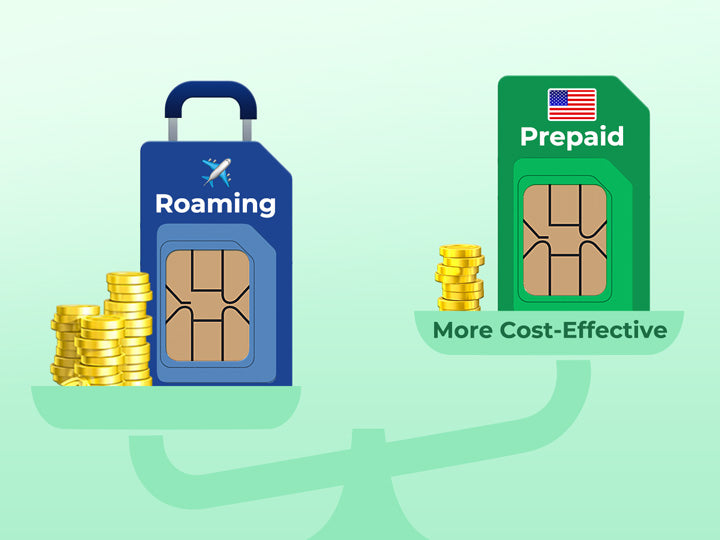How Do Cellular Trail Cameras Work?

Cellular trail cameras have become rather popular among outdoor enthusiasts, nature photographers, and those engaged in wildlife preservation. These cameras provide convenience, accuracy, and efficiency at such a level that shadows, whether observing animal behaviors in remote areas or monitoring hunting grounds.
We will explain how cellular trail cameras work and their practical uses, and discuss what factors to consider when selecting the right one for specific needs. For an optimal setup, a special mention goes to Trail Camera SIM cards, exemplified by the EIOTCLUB Trail Camera SIM Card.

How Cellular Trail Cameras Work
Cellular trail cameras send the images they record via cellular networks. Receiving real-time footage depends on data transmission. Thus, these cameras usually operate with 3G, 4G, or 5G networks, depending on the camera model and the area’s connectivity. Supporting major US carriers like AT&T, T-Mobile, and Verizon, the EIOTCLUB Trail Camera SIM Card, for example, provides wide coverage and dependable 4G LTE connectivity across far-off sites. Users can simply plug in the SIM card and start getting data right away without having complex setups, since no activation is needed.
Why You May Need Cellular Trail Cameras
Cellular trail cameras indeed do a great job in remote monitoring of wildlife behavior. Hunters, for example, can use them to track game, remaining aware of animal movement patterns without disturbing the natural habitat. Nature enthusiasts can use them for wildlife observation, gathering critical data for conservation projects or simply enjoying the beauty of the outdoors.
These cameras are particularly helpful in situations when visiting the site often could be difficult or unworkable. In far-off places where animals migrate erratically, catching the precise moment of interest would otherwise need time-consuming, repeated travels. By forwarding data straight to the user, cellular trail cameras solve these problems and save time and effort.
These cameras give peace of mind for people keeping an eye on vast areas since they let several sites to be watched simultaneously. Cellular trail cameras can provide insightful information free from human intervention whether the objective is to monitor deer migration patterns or identify rare bird species. Using a flexible SIM card—such as the no-contract, data-only card from EIOTCLUB—ensures that these insights are obtained free from the hassle of hidden fees or pointless service interruptions.

How to Choose the Right Cellular Trail Camera
Well, you may have a few things to think about. Areas with weak cellular signal coverage require cameras compatible with low-bandwidth networks. On the other hand, in regions with strong signal strength, 4G or 5G-capable cameras will perform best with faster transmission times and higher-quality images. SIM cards, like those from EIOTCLUB, which provide high-speed 4G LTE connections and wide coverage, make such cameras more reliable in remote or rural locations.
Battery life and storage capacity cannot be ignored. Outdoor conditions can deplete battery power quickly. A camera with a robust battery system, or one compatible with solar panels, is necessary. Besides, a higher storage capacity guarantees that the camera can store more footage locally, reducing the risk of missing important shots due to full memory.
For detailed wildlife photography or game monitoring, high-resolution images are vital. Similarly, the camera’s trigger speed, which dictates how quickly the camera captures an image after sensing movement, should be fast enough to capture animals in action.
If you need the best trail camera SIM cards at a resonable price, do check out the EIOTCLUB Trail Camera SIM Card
|
Feature |
Description |
|---|---|
|
Network Support |
AT&T, T-Mobile, Verizon |
|
Network Type |
4G LTE high-speed connection |
|
SIM Card Type |
Data-only, no talk or text |
|
Coverage |
USA-wide |
|
Activation |
Plug and Play, no activation required |
|
Contracts/Fees |
No contracts, no hidden fees |
|
Data Plan Options |
$5.99: 100MB (30 days) $75.00: 3.5GB (360 days) $100.00: 7GB (360 days) |
How to Use a Trail Camera SIM Card with a Cellular Trail Camera
Installing a SIM card in a cellular trail camera is easy, though some precautions should be taken. Before installation, you should make sure that the camera is turned off to avoid any internal damage to the hardware. The SIM card slot is usually found within the battery compartment or a side panel on the camera. Once the SIM card is securely in place, turning the camera back on should result in a connection to the cellular network. The EIOTCLUB SIM card simplifies this step with its plug-and-play setup, meaning no manual activation is needed.
Routine maintenance of both the SIM card and the camera itself will help avoid disruptions in connectivity. In areas prone to harsh weather, it is wise to regularly check for corrosion or damage to the SIM card slot. Additionally, users should monitor their data usage to prevent the SIM card from running out of cellular data unexpectedly.
Troubleshooting can typically be done through the camera’s mobile app, which offers diagnostic tools to check the camera’s network connection and data plan. If issues persist, you can refer to customer support. EIOTCLUB boasts 24/7 Customer Service, a true bonus for every EIOTCLUB Trail Camera SIM Card holder.

Final Words
Undeniably, cellular trail cameras bring convenience and enjoyment to outdoor activities. These devices enable real-time wildlife monitoring without interfering with the surroundings. These cameras provide a perfect mix of technology and environment whether they are used by hunters tracking game or nature lovers catching rare events. Also, having a high-quality trail camera SIM card, such as the EIOTCLUB card, is vital for the camera’s maximized performance.

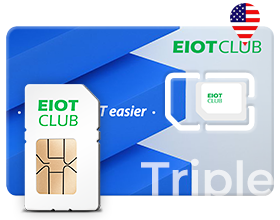



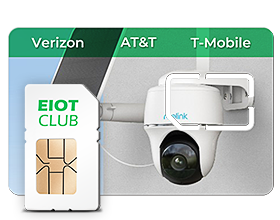
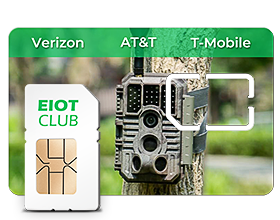
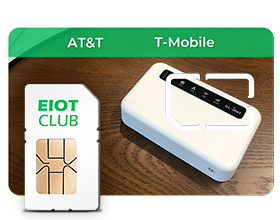













 eSIM
eSIM
 Refill
Refill
